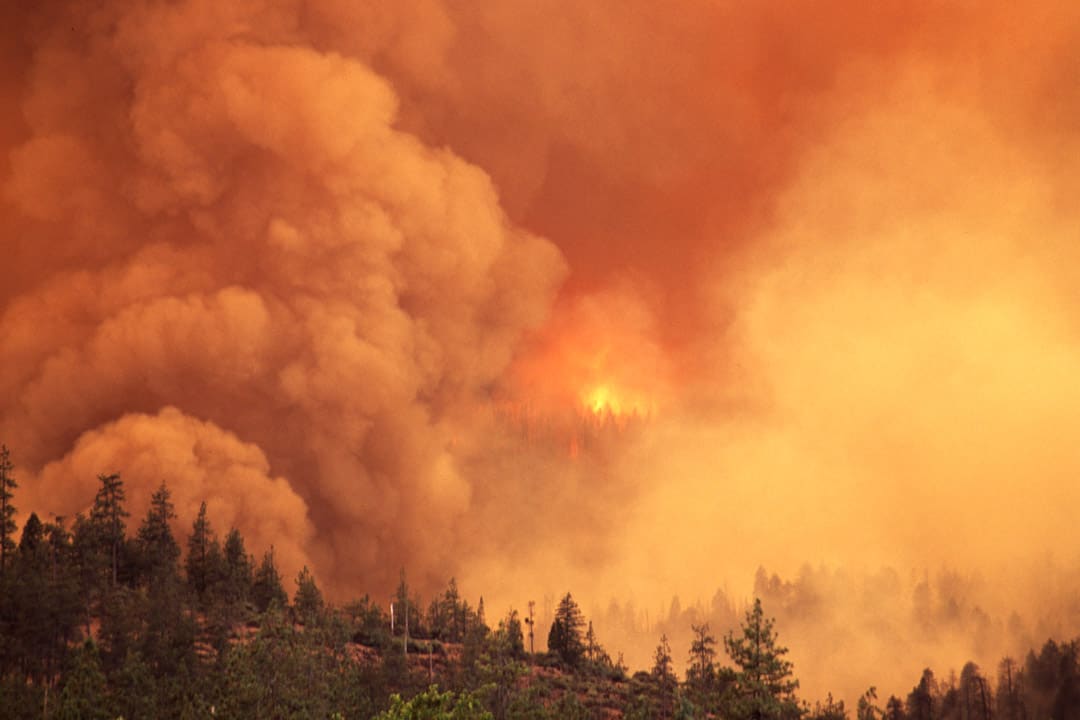Close to 13,000 square kilometres of land were scorched, blistered, and branded in British Columbia in 2018, and this year has set a new record for the largest area burned by fire in a season.
Even in Ontario, over 1,200 fires have broken out as of August 30, double the 10-year average for the province.
The number of fires and the damage that they inflict can vary over different seasons. But recent trends point to a worrisome pattern.
U of T Faculty of Forestry Professor Emeritus David Martell points to the worrying increase in the length of the fire season, saying that the science predicts the fire season will only get longer.
In a 2013 study, Martell and his colleagues reviewed fire seasons — the length of time from the first day of a reported naturally ignited fire to the last day that a fire is reported in a given year — from 1960 to 2009 in Eastern Ontario and Western Ontario and from 1961 to 2003 in Alberta. The fire season in Alberta lasted approximately 55 days longer.
Though less drastic, the fire seasons in Eastern and Western Ontario lasted around 15 to 20 days longer by the end of the 50-year period.
This points to a growing body of evidence that worsening global warming leads to longer fires and more disastrous fire seasons. There are now larger portions of each year when a wildfire can occur.
Prolific wildfires are not only confined to Canada, but also across the western United States, Europe, Asia, and Australia. Longer fire seasons and related trends are attributed to drier soil conditions, which have been linked to global warming.
The fire triangle is a simplistic explanation of the requirements for a fire: heat to ignite, fuel, and oxygen. While lightning provides the ignition for a fire, the vegetation on the ground acts as fuel.
Temperatures are notably progressing past historical norms, and a profound impact has been observed in the global water cycle. Warmer conditions increase the amount of evaporation from the soil and the ocean. The atmosphere can hold an excess of water at these elevated temperatures that would otherwise return to the surface as rain or snow. For certain vulnerable regions, the extra evaporation can lead to drier soil conditions that require much lower heat to ignite and provide suitable fuel for a fiery outcome.
As fires continue to rage, there are fire management systems in place for the allocation of resources to protect people and limit the damage wrought by such disasters. Tools such as the Fire Danger Rating System and the Fine Fuel Moisture Code provide information to the public and fire managers on the likelihood of fires in forested areas. Provincial wildfires services, such as the Ministry of Natural Resources and Forestry in Ontario, monitor lands for and organize a response to observed fire events.
Martell, whose research focus is on forest fire management systems, notes that there are other programs being developed to improve the efficiency in the monitoring and management of wildfires.
However, management systems are analogous to a band-aid solution: they do not address the root of the problem.
As the effects of climate change worsen, the main concern is that there will be greater areas susceptible to wildfires. This increase will lead to the release of more carbon dioxide into the atmosphere and the positive feedback loop of warming, drying, and blazing will continue.


